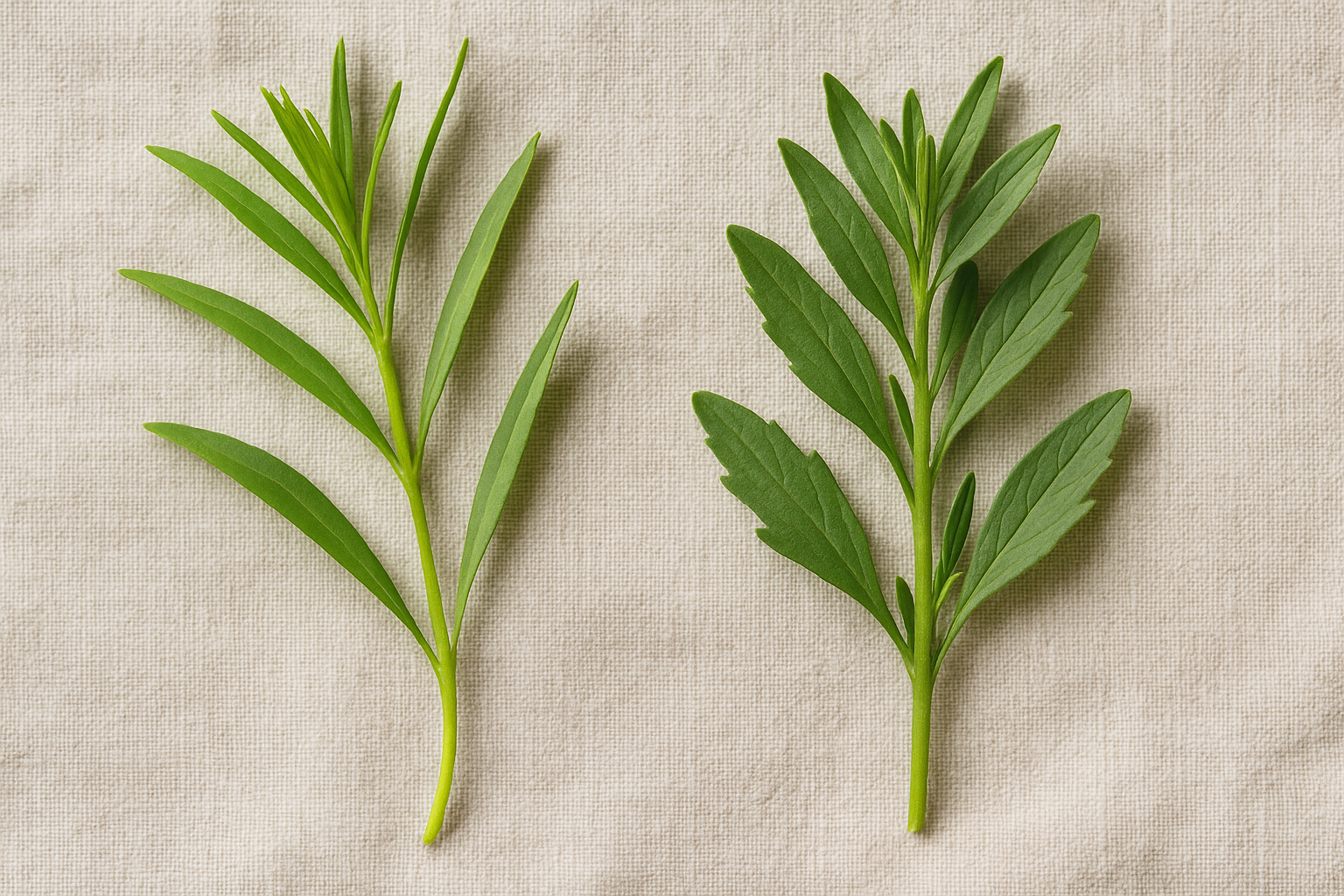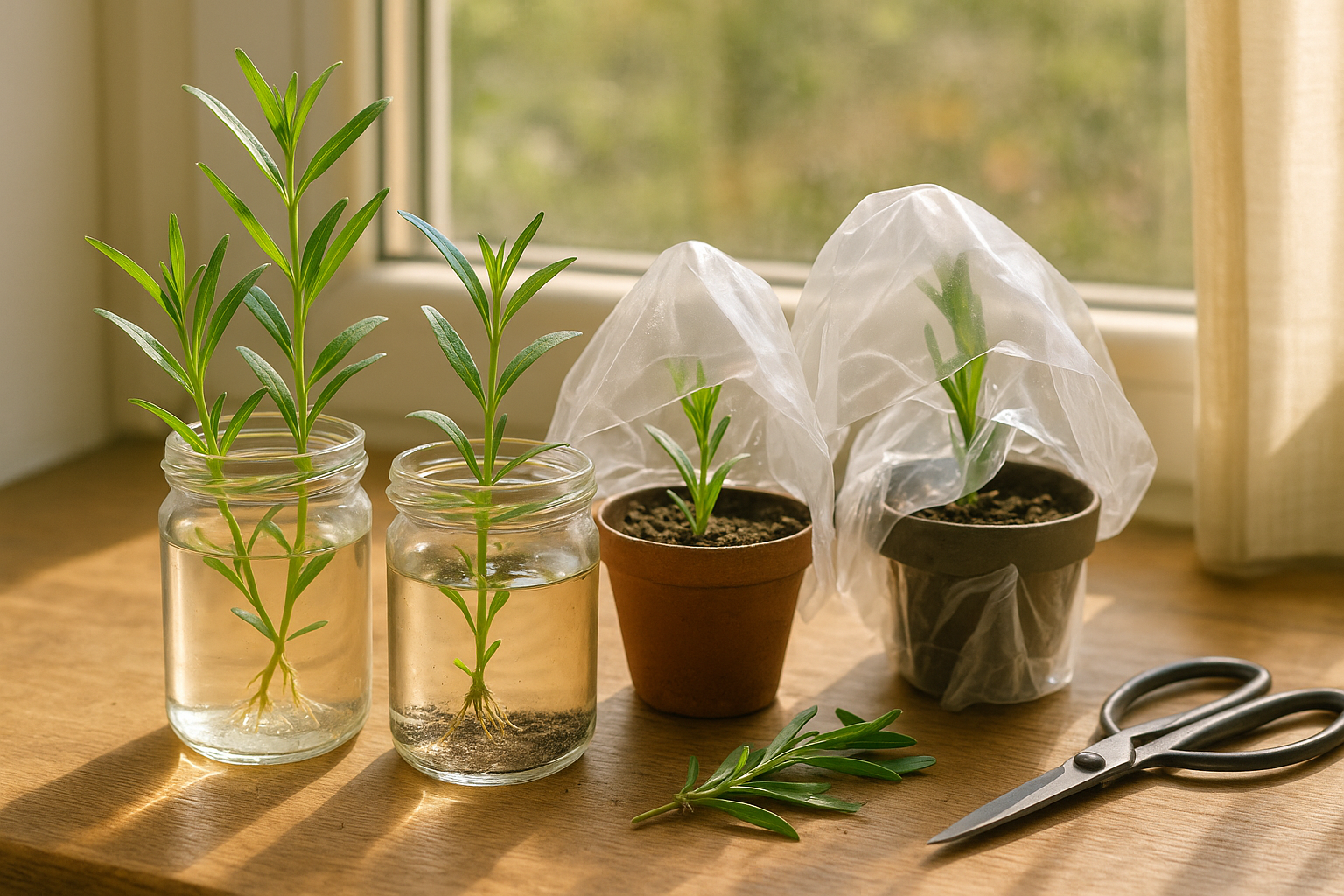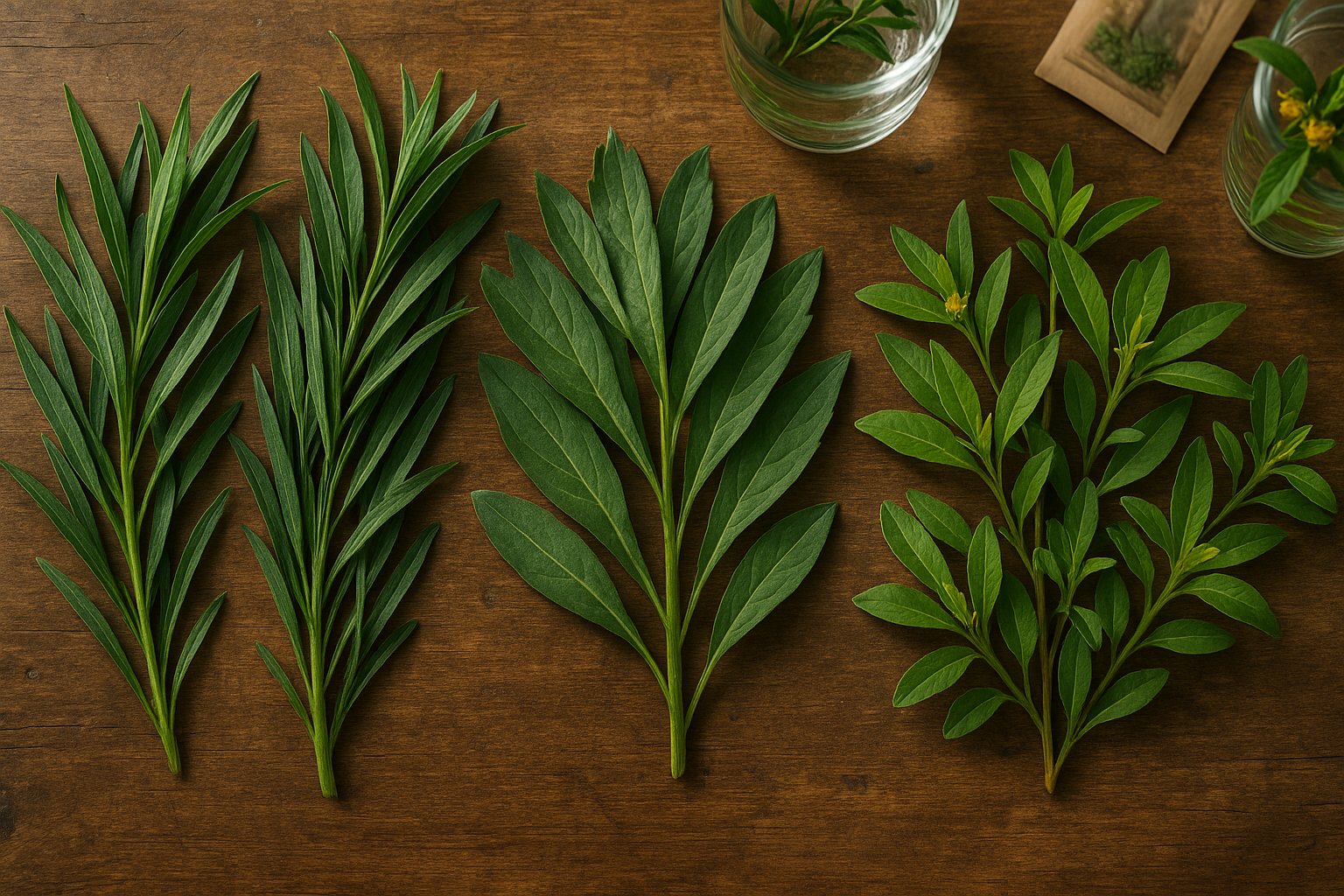Understanding Tarragon Varieties and What You Buy at the Store

When shopping for tarragon, it’s easy to get confused by the different types—French, Russian, and sometimes even wild or Mexican tarragon. French tarragon (Artemisia dracunculus var. sativa) is prized by chefs for its delicate, sweet anise-like flavor, and it’s the classic tarragon used in French cuisine.
However, you’ll rarely find French tarragon seeds at the store because this variety is sterile and can only be propagated by cuttings or root division, not from seed. Most garden centers sell French tarragon as fresh sprigs or small potted plants.
Russian tarragon (Artemisia dracunculus), on the other hand, is commonly sold in seed packets since it grows easily from seed—but its flavor is much milder, sometimes even grassy or bitter, making it less desirable for culinary uses.
Occasionally, you might also see Mexican tarragon (Tagetes lucida), which isn’t a true tarragon but has a similar flavor and is heat-tolerant, making it popular in warmer climates.
To tell what you have, look for subtle differences:
- French tarragon leaves are slender and soft with a fragrant aroma.
- Russian tarragon leaves are larger, tougher, and have little scent.
Knowing what kind you’re growing is important because only French tarragon will deliver that authentic flavor and won’t grow from seeds—so if you’re hoping to propagate more, make sure your plant came from a cutting or live sprig, not a seed packet.
Can You Regrow Store-Bought Tarragon? The Simple Answer
Yes, you can often regrow tarragon from store-bought sprigs, but your success depends on the variety and the condition of the stems you choose. French tarragon—prized for its superior flavor—is especially sought after, but it almost never grows from seed. So, rooting fresh cuttings is one of the best options for home gardeners.
If you buy French tarragon at the grocery store, look for sprigs that are vibrant green, firm, and free from wilting or sliminess, with at least a few leaf nodes intact near the base. These nodes are where roots are most likely to develop.
Trim the sprigs at a 45-degree angle just below a node, remove the lower leaves, and place the stems in a glass of water on a sunny windowsill. You should see roots forming within a couple of weeks.
In contrast, Russian tarragon is much easier to grow from seed or cuttings, but it has a milder, almost grassy flavor that’s not as highly regarded for cooking.
For best results, always choose the freshest store-bought tarragon you can find, and avoid any stems that are dried out, discolored, or damaged. With a little patience, you’ll likely see new growth ready to plant in soil.
Step-by-Step Guide to Regrowing Tarragon from Cuttings

Regrowing tarragon from cuttings is a simple and rewarding way to expand your herb garden, whether you choose water rooting or soil propagation. Start by selecting healthy, non-flowering tarragon stems about 4-6 inches long. French tarragon, in particular, doesn’t grow from seed, so stem cuttings are essential.
Avoid woody or limp stems; look for fresh green growth that’s flexible but firm. Use clean, sharp scissors to cut just below a leaf node—the spot where leaves join the stem. Strip the lower leaves from the bottom third of the cutting to expose nodes, as this is where roots will develop.
Water Rooting Method
For water rooting, place the cuttings in a glass or jar with just enough water to submerge the nodes, but keep the leaves above the waterline to prevent rot. Change the water every few days to avoid mold, and place the jar in a warm, bright spot out of direct sun. Water rooting makes it easy to monitor root growth, but transplanted cuttings may experience more shock when moved to soil.
Soil Propagation Method
For soil propagation, fill a small pot with moist, well-draining potting mix. Make a hole with a pencil and insert the cutting, gently firming the soil around it. Cover the pot with a plastic bag to retain humidity, and place it somewhere warm with indirect light—avoid letting the bag touch the leaves. Soil propagation often leads to stronger root systems but makes it harder to check progress.
General Tips for Both Methods
- Warmth boosts rooting—aim for temperatures between 65-75°F.
- Keep the soil or water constantly moist but not soggy to avoid rotting the stems.
- Once healthy roots develop (usually in 2-4 weeks), transplant to a larger pot or the garden.
- Gradually expose new plants to more sunlight to acclimate them.
With these tips, you’ll enjoy lush tarragon harvests in no time!
Caring for Your New Tarragon Plant
When nurturing your new tarragon cuttings, focus on gentle routines that encourage healthy rooting and steady growth. Keep the cuttings in bright, indirect sunlight—placing them on a sunny windowsill with filtered light works perfectly indoors. Avoid harsh midday sun, which can scorch delicate leaves, but don’t settle for a dim spot either.
Water the cuttings just enough to keep the soil or water medium moist but never soggy; too much water can cause root rot, and too little will leave the stems wilting. Once you see new roots about an inch long, transplant your tarragon into well-draining potting soil. Choose a small container with drainage holes to start, and use a light soil mix—regular garden soil can be too compact for the baby roots.
Whether you keep your tarragon indoors or move it outdoors, make sure it gets at least six hours of indirect sunlight each day and is shielded from harsh winds or sudden temperature drops. If moving it outside, let the plant acclimate by setting it out for a few hours each day.
Common mistakes include:
- Overwatering
- Leaving the cuttings in water too long, which can lead to weak, waterlogged roots
- Exposing them to sudden changes in light and temperature
Instead, err on the side of patience—allow your new tarragon to gradually adjust at each stage, and you’ll be rewarded with a lush, flavorful herb plant ready for your kitchen or garden.
Harvesting and Using Homegrown Tarragon
For the best flavor, harvest tarragon once your plants are well-established, with stems at least 6 inches tall—usually in late spring or early summer. Snip young, tender leaves in the morning after the dew has dried but before the heat of the day, as this is when their essential oils are at their peak. Use sharp scissors to avoid damaging the plant, cutting no more than one-third of any stem so the plant keeps growing.
Homegrown tarragon has a fresher, more vibrant anise-like taste than store-bought, which can sometimes be dry and less fragrant. Toss fresh tarragon into salads, vinaigrettes, or scrambled eggs, or add a sprig to vinegar for a flavorful infusion.
For longer storage, dry small bunches of leaves upside-down in a dark, airy spot or freeze them in olive oil cubes to preserve their flavor. Strip the dried leaves from the stems before storing them in an airtight container. Remember, because homegrown tarragon is more potent, start with less in recipes and adjust to taste.
With a little planning, you’ll have a steady supply of aromatic, delicious tarragon to elevate your dishes year-round.
Troubleshooting Common Regrowing Problems
Regrowing veggies at home can be rewarding, but it’s not always smooth sailing—common issues include wilting, failed rooting, and unwanted pests. If your cuttings wilt quickly, it’s often due to too much sun or insufficient water. Keep them in indirect light and mist with water daily to maintain moisture.
For failed rooting, make sure to change the water every few days to prevent rot and mold, and use clean containers to avoid bacteria. Some veggies, like green onions and lettuce, root best when about an inch of their white base is submerged.
If pests show up—tiny gnats or aphids are common—gently rinse your plants and consider placing a small fan nearby to discourage insects from settling. Covering new cuttings loosely with a plastic bag can help create a humid environment to speed up root growth, but ensure there’s airflow to prevent mold.
Remember, not all store-bought veggies regrow well—organic or locally sourced options often perform better, as they’re less likely to be chemically treated. With a bit of patience and these troubleshooting tips, you’ll boost your chances of growing healthy, thriving plants from scraps.
